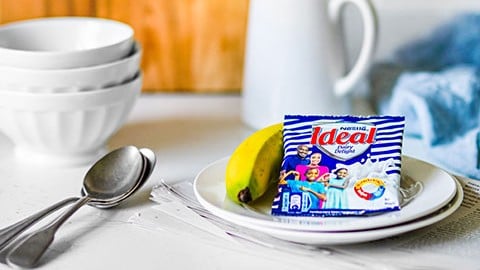Research has shown that food fortification, particularly infant cereal fortification, can reduce iron deficiency among infants aged 6+ months, a time at which the natural iron reserves of a child can start to deplete.
Studies1 across the world, from Australia to Ghana, have revealed that young children are not getting their recommended daily micronutrient intake during the introduction of solid foods into children's diets from around 6+ months of age.
Iron deficiency is one of the most common nutrient deficiencies in both developing and developed countries, with an estimated 40% of pre-school kids globally affected by anemia. Iron deficiency anemia in young children can impair their physical and cognitive development and prevent them from realizing their full developmental potential.
These studies offer research insights on the vital role of fortified infant cereal for young children.
Fortified cereals as an effective strategy to tackle iron deficiency
The Australian Feeding Infants and Toddlers Study 2021 or 'OzFITS Trial' from the South Australian Health and Medical Research Institute (SAHMRI), published as a supplement in Nutrients, concluded that iron fortified infant cereals can improve iron intake among infants aged 6+ months.
This first-ever nationwide study of children under 2-years of age in Australia discovered that three-quarters (75%) of babies aged 6-12 months and a quarter (25%) of toddlers aged 1-2 years were not getting enough iron on a daily basis, putting them at risk for iron deficiency.
A subsequent modelling study published in The Journal of Nutrition end of last year, showed that adding one serving of iron-fortified infant cereals daily to current diets (18g providing 6.2 mg of iron), would reduce the prevalence of iron deficiency from 75 to 5%.
The study explains that few infants aged 6-12 months consumed iron-rich foods, such as red meat, poultry, fish and iron-fortified cereals, and those that did, consumed small amounts. It goes on to say that even if higher amounts of iron-rich animal-source foods were given to infants, it is unlikely they would meet iron requirements, given the small amounts of food infants consume. The findings show that iron-fortified infant cereals can be an effective strategy for helping infants meet their iron requirements as they are specially formulated to meet their needs.
Preventative and long-term approach
In India and Nepal, nearly 70 pediatricians assessed scientific evidence and pan-India and regional data from the WHO, UNICEF, National Family Health Survey 5, and the Nepal Demographic and Health Survey 2022 to understand the challenges of complementary feeding.
They concluded that fortified infant cereals can be used as a preventative and long-term approach for meeting the nutritional needs of infants aged 6-23 months alongside homemade food. This position paper was published in the Journal of Pediatrics, Perinatology and Child Health last year.
Reduced iron-deficiency
In Ghana, a controlled clinical trial on the effect of iron-fortified infant cereals on the nutritional status of infants aged 6-18 months led by the Department of Nutrition and Food Science at the University of Legon-Accra, showed that a third of the iron-fortified infant cereal group had a greater reduction in iron-deficiency anemia.
A similar study involving the University of Yaoundé, University of Douala, Institute for Medical Research and Study of Medicinal Plants in Cameroon of over 200 anemic but healthy children aged under 5-years of age, revealed that nearly three-quarters of infants in the iron-fortified cereal group had lower iron deficiency.
Filling nutritional gaps
Nestlé has been continuously working to offer fortified, age-adapted baby food including infant cereals, to help address micronutrient deficiencies in young children.
"It's about expanding the conventional role of infant cereals and helping to fill micro and macro nutritional gaps," explained Dr. Sara Colombo Mottaz, Head of Medical, Regulatory and Scientific Affairs for Nestlé's Nutrition Strategic Business Unit.
"By the age of six months, infants may experience depleted nutrient levels due to the simultaneous introduction of complementary food alongside continued breastfeeding. Age-adapted cereal consumption goes beyond iron, it also provides the body with micronutrients, like zinc, calcium, vitamin D and magnesium. Addressing nutritional knowledge gaps among parents and healthcare professionals is also an important factor," she continued.
James Knott, Global Head for Early Childhood Food at Nestlé, added: "Ensuring access to nutrients at the right levels enhances the brain development and cognitive function of young children. Fortified infant cereals can further help behavior development as early exposure to different flavors, textures and colors can influence future healthy eating patterns. For example, the more different textures children consume, the more they move their mouth, lips and tongue, thus enhancing oral development and motor skills."
1 Cited studies include research published by academic institutions as well as research funded by Nestlé or in which it has collaborated. In all its collaborations with academia, Nestlé prioritizes scientific integrity, independence and rigorous review processes.








